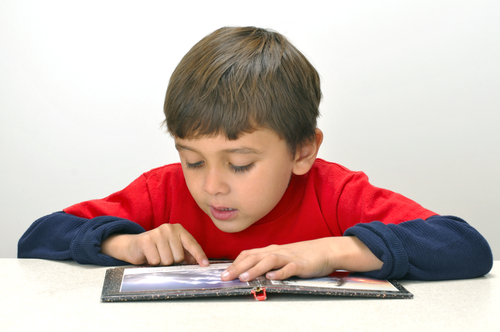
The Reading Process
Reading is complicated. There are 4 major stages that a child will need to go through in their lifetime to become a proficient and strong reader. This process involves word recognition, comprehension, fluency, and most importantly… motivation. The following outlines the key features of the reading process at each stage:
Stage 1 of the Reading Process: Decoding (Ages 6-7)
At this stage, beginning readers learn to decode by sounding out words. They comprehend that letters and letter combinations represent sounds and use this information to blend together simple words such as hat or dog. This is the phase where a child with dyslexia, auditory processing or a reading disability will have great difficulties. Although these children will probably be able to comprehend that individual letters represent distinct sounds, they might find it tremendously difficult to put the sounds together to spell words, and almost impossible to decode words by breaking down the component sounds.
Stage 2 of the Reading Process: Fluency (Ages 7-8)
Once students have mastered the decoding skills of reading, they begin to develop fluency and other strategies to increase meaning from print. These students are ready to read without sounding everything out. They begin to recognize whole words by their visual image and orthographic knowledge. They identify familiar patterns and achieve automaticity in word recognition and increase fluency as they practice reading recognizable texts. A child with dyslexia, auditory processing or a reading disability will often begin to fall seriously behind in this phase. These children will need to be explicitly taught and will require additional remedial instruction or tutoring in phonetic strategies.
Stage 3 or the Reading Process: Comprehension (Ages 8-14)
Students in this stage have mastered the reading process and are able to sound out unfamiliar words and read with fluency. Now the student is ready to use reading as a tool to acquire new knowledge and understanding. During this stage, vocabulary, prior knowledge, and strategic information become of utmost importance. Children will need to have the ability to understand sentences, paragraphs, and chapters as they read through text. Reading instruction during this phase includes the study of word morphology, roots, prefixes as well as a number of strategies to help reading comprehension and understanding.
Stage 4 or the Reading Process: Multiple Viewpoints (Ages 14-18)
Different from the previous stages of reading development, students are now exposed to numerous viewpoints about subjects and can analyze text as well as handle facts and concepts. When a student reaches this phase in reading, where reading involves more complex thinking and analyzing, they are ready to share and manipulate ideas. This is crucial to the last stage of reading – College level and beyond!
Learn more about the New PRIDE Reading Program
____________________________________________________________________________________________________
Karina Richland is the Founder and Director of PRIDE Learning Centers, located in Los Angeles and Orange County. Ms. Richland is a certified reading and learning disability specialist. Ms. Richland speaks frequently to parents, teachers, and professionals on learning differences, and writes for several journals and publications. You can reach her by email at karina@pridelearningcenter.com or visit the PRIDE Learning Center website at: www.pridelearningcenter.com
